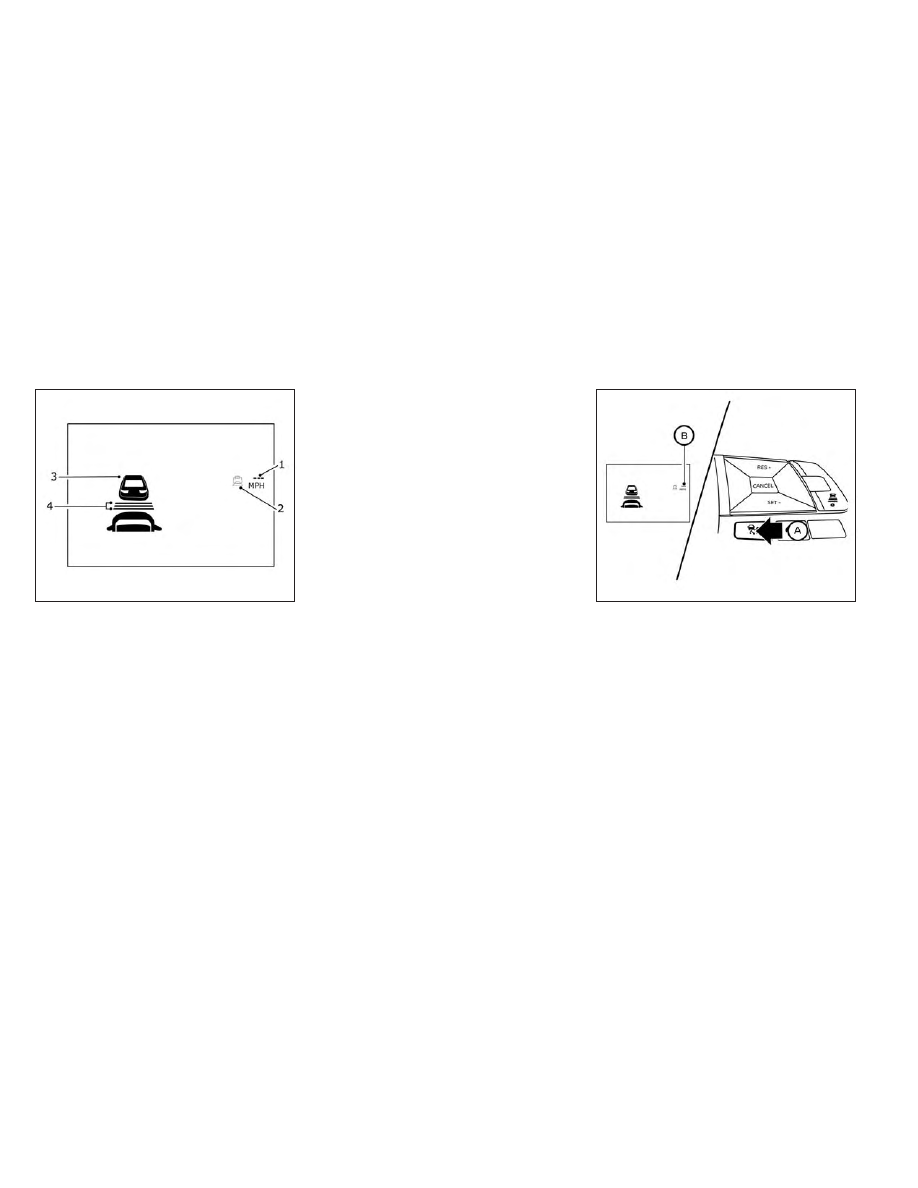Nissan Leaf (2023 year). Manual in english - page 25

Vehicle-to-vehicle distance
control mode display and
indicators
The display is shown in the vehicle infor-
mation display.
1. Set vehicle speed indicator:
Indicates the set vehicle speed.
For Canadian models, the speed is dis-
played in km/h.
2. This indicator indicates the ICC system
status depending on a color:
•
ICC system ON indicator (gray):
Indi-
cates that the ICC switch is on.
•
ICC system SET indicator (green):
In-
dicates that the cruising speed is set.
•
ICC system warning (yellow):
Indi-
cates that there is a malfunction in the
ICC system.
3. Vehicle ahead detection indicator:
Indicates whether it detects a vehicle in
front of you.
4. Set distance indicator:
Displays the selected distance between
vehicles set with the distance switch.
Operating vehicle-to-vehicle
distance control mode
To turn on the cruise control,
quickly push
and release the ICC switch
O
A
. The ICC sys-
tem ON indicator (gray), set distance indi-
cator and set vehicle speed indicator
O
B
come on in a standby state for setting.
LSD2852
LSD2853
Starting and driving
5-73